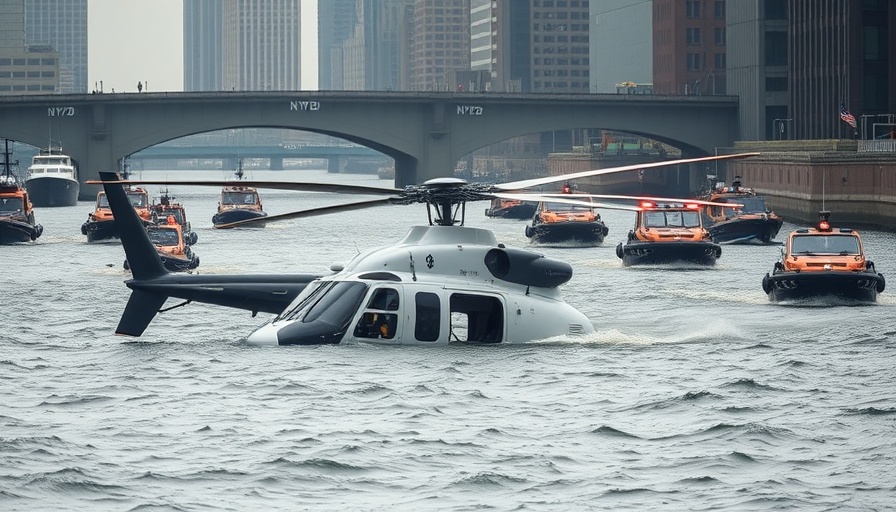
A Tragic Day in Jersey City: Understanding the Impact of the Helicopter Crash
In a heart-wrenching tragedy, six people lost their lives when a helicopter crashed into the Hudson River on the afternoon of April 10, 2025. The incident unfolded around 3:17 p.m. near the Holland Tunnel ventilation shaft in Jersey City, leaving a community and a grieving family grappling with the aftermath of this devastating incident. Among the deceased were three adults and three children, including a family visiting from Spain and their pilot.
Immediate Response From Emergency Services
Authorities responded promptly to the crash site, with NYPD units from aviation, harbor, and scuba divisions arriving within minutes. NYPD Commissioner Jessica Tisch updated the public, stating that divers retrieved four individuals from the water, while two others were recovered by FDNY divers. Sadly, four of the victims were pronounced dead at the scene, while two more passed away shortly after reaching local hospitals. Mayor Eric Adams expressed condolences, emphasizing the tragedy's profound emotional toll on the victims' families and the community.
A Closer Look at the Helicopter and Flight Path
The helicopter, identified as a Bell 206, belonged to the tour company New York Helicopters. Eyewitness accounts reveal it took off from Lower Manhattan, initially flying over iconic landmarks such as Governor's Island and the Statue of Liberty before heading back down the Hudson River. Tragically, it crashed shortly after turning near the George Washington Bridge, highlighting the unexpected nature of aerospace incidents in busy urban environments.
Public and Government Reactions: National Impact
The incident has garnered significant media attention, prompting reactions from figures such as former President Donald Trump, who conveyed his condolences on social media platforms. Trump's comments underscore the growing concern over aviation safety, especially in densely populated urban areas where accidents can lead to devastating outcomes. National news outlets and local coverage alike have resonated with the emotional weight of the event, spotlighting broader discussions regarding helicopter safety regulations and tourism impacts.
Learning From Past Incidents: The Need for Enhanced Safety Regulations
The helicopter crash in the Hudson River echoes past aviation tragedies, inviting conversations about how safety protocols can be improved. Accidents involving tourist flights, in particular, raise questions regarding pilot training, maintenance practices, and regulatory oversight. Advocates for aviation safety emphasize that learning from previous mistakes is essential to prevent similar tragedies in the future, as the need for protective measures becomes increasingly urgent in today’s bustling aviation environment.
Impact on the Community and Local Businesses
This tragic accident does not only affect the victims' families; it also strikes at the heart of Jersey City's vibrant tourism sector. Many local businesses rely on the influx of tourists eager to see the city’s skyline. As community members reflect on this tragedy, discussions around enhancing safety measures for aerial tours could potentially reshape the way businesses operate, fostering a long-term commitment to prioritizing visitor safety alongside economic interests.
Conclusion: Reflecting on a Heartbreaking Event
The helicopter crash into the Hudson River serves as a stark reminder of the risks associated with aviation, particularly in a highly populated and touristic region. As the city mourns the loss of six lives, the event calls for a thorough investigation to ensure accountability and the implementation of more stringent safety measures to prevent such an incident from happening again. It is crucial that both local authorities and national regulations come together to enhance the safety of aerial operations, safeguarding residents and visitors alike. Let us honor the memories of those lost and advocate for the necessary changes that will protect futures.
 Add Element
Add Element  Add Row
Add Row 



 Add Row
Add Row  Add
Add 


Write A Comment